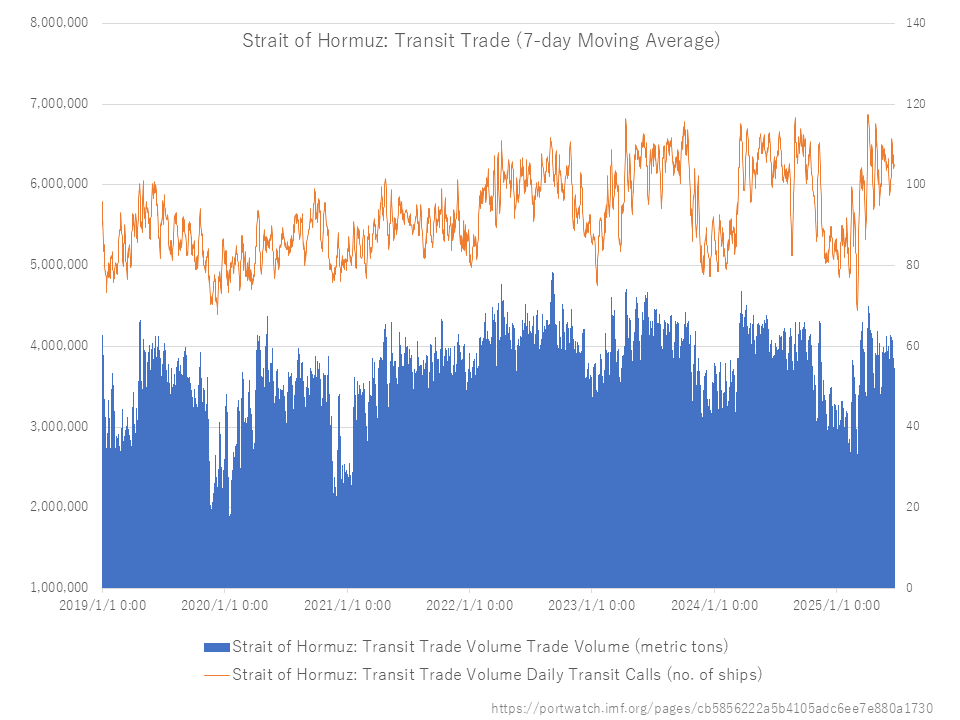Pick Up
1285. Security of the Strait of Hormuz and Global Energy and Food Security

1285. Security of the Strait of Hormuz and Global Energy and Food Security
The Strait of Hormuz is located between Oman and Iran and is an important waterway that connects the Persian Gulf, the Gulf of Oman, and the Arabian Sea. The U.S. Energy Information Administration (EIA) describes the strait as "the most important oil transport chokepoint in the world."
The strait is extremely congested and dangerous, with a width of 33 kilometers at its narrowest point and shipping lanes just about 3.2 kilometers wide in each direction. Large amounts of crude oil, extracted from oil fields in the Persian Gulf region by OPEC member countries such as Saudi Arabia, the United Arab Emirates, Kuwait, and Iraq, and consumed worldwide, pass through the strait. Qatar, one of the world's leading liquefied natural gas (LNG) producers, relies heavily on the strait for the transportation of LNG exports.
Geopolitical conflicts have brought the security of this waterway back into the spotlight. A blockade of the waterway or a disruption to crude oil shipments could cause a spike in crude oil prices, dealing a major blow to energy importers, especially in Asia.
The disruption of international trade in fuel and fertilizer could have a significant impact on food production, which depends on fuel and fertilizer, threatening global food security. The international community needs to closely monitor and respond to the situation.
Contributor: IIYAMA Miyuki, Information Program
